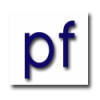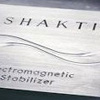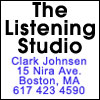
POSITIVE FEEDBACK ONLINE - ISSUE 1



 |
POSITIVE FEEDBACK ONLINE - ISSUE 1 |
 |
 |
"I Don’t Drive Stock!" Modding & Hotrodding the Sony SCD-1 SACD player, part 1: The Audiocom
Superclock and Superclock Power Supply Background to modding and hotrodding It seems like only yesterday that Sony/Philips released the ground-breaking SACD format to the general public, but it’s now been over two years since the format hit the streets. In that time, DSD and SACD have done more to stir the pot of fine audio than anything in many years—and all to the good. As I noted back in the fall of 1998, when I first heard DSD sound at Mobile Fidelity (see PF Vol. 7, No. 6), the format was stunningly good, a true quantum leap past the ever more tiresome limitations of standard CDs. I felt that if Sony/Philips were able to deliver what I was hearing at the consumer end, audio was in for one helluva good time! The question of whether DSD could be delivered optically was answered in part at CES 1999. Winston Ma, Mike Pappas, Lila Ritsema, and I attended Sony’s invitation-only demonstration of their prototype SACD playback system, based on the SCD-1. Mike and I were mightily impressed at the capabilities of SACD, even through a playback system that wasn’t known to us. (All Sony, as it turned out.) Mike made his classic comment, "David, I have seen the future of audio!"—and we waited to see how the consumer release would sound. Through the good offices of David Kawakami, Sony shipped a review SCD-1 to Positive Feedback in the summer of 2000. There were few SACDs at that time, mainly demo discs, but what I had confirmed that Sony was delivering something revolutionary in its "release to manufacture" of the format. As a matter of fact, I would end up delivering a verdict of "mic feeds and master tapes for the masses!" A true breakthrough: a format that allowed us to mass produce recordings that brought us into the control room and allowed us to tap into the console bus. Earlier formats—open reel tape, audiophile grade LPs, Direct to Disc—all delivered very fine reproduction in varying degrees, but were generally producible in only limited quantities. With SACD, we have retained the virtues (and challenges!) of optical disc reproduction, while losing the disheartening limitations of 44.1kHz/16-bit reproduction: harshness, lack of extension and ease in the higher frequencies, increasing phase error with increasing frequency, relatively poor imaging and soundstaging, and timbral inaccuracy… that sort of thing! (Disagree with me? Get thee to a fine open reel recorder or a state-of-the-art turntable with good LPs and meditate!) In other words: standard CDs have been superseded by a remarkably superior format, and by a wide margin. Going to the next level The question now is: can that which is superior — SACD — be made even better? Well, either that’s a rhetorical question, or this is going to be one helluva short article… The answer is "yep!" Which shouldn’t surprise or upset any of us too much; any card-carrying audiophile has some knowledge of the fact that most stock audio gear can be modded/hotrodded to achieve higher levels of performance. The Sony SACD players are certainly no exception to this rule. As a matter of fact, David Kawakami of Sony’s DSD project made this quite clear to me at CES 1999. In sum, his comments were that Sony is not a "high end" audio company (though the build quality of players like the SCD-1, the 777ES, and the XA777ES is really quite spectacular), and that there was room for improvement in the implementation of the SACD standard. Components, internal wiring, power cabling, connectors… all were singled out as targets for upgrading. And none of these would come as any surprise to those who have designed, built, or modified audio gear — even if the modifications were as straightforward as new power cables/interconnects. External mods are easily attainable by anyone with the willingness to invest some time and money in experimentation. Internal mods, on the other hand, require an experienced hand, or (more usually) professional assistance, and require some careful thought before proceeding. The reasons for this are simple:
For all of these reasons, you should proceed with caution, and consult with an expert when considering the modification of your Sony SACD player. So… who are these "experts," anyway? Glad you asked! At the current time, I am aware of four professionals engaged in modifying various models of the Sony SACD players. Richard Kern Ric Schulz Allen Wright Dan Wright I have heard good reports about all of the above professionals. Two of the four are located right here in the Portland area (Richard Kern and Dan Wright), and have exceptional reputations locally. Either can be approached with confidence, in our experience. Allen Wright is well known to European audiophiles, has published in Positive Feedback before, and has a fine reputation. Ric Schulz is not so well known to me, but those who have posted experiences with his EVS DACs and SACD upgrades on audioasylum.com seem to be pretty satisfied with the results. For those of you wishing to contact the USA distributor of Audiocom directly, you can reach him at the following address: Kyle Takenaga You can also visit the Audiocom UK website at www.audiocom-uk.com. Doing the deed I had been hearing a great deal about the new modifications available from Audiocom for the SCD-1 and SCD-777ES. Many of my audiobuds over on Audio Asylum's (www.audioasylum.com) Hi-Rez Highway bulletin board (www.audioasylum.com/forums/hirez/bbs.html) had either already tried the Audiocom mods or were contemplating them. The temptation was pretty strong for me to try the mods. Given the intriguing reports that Positive Feedback’s Jim Treanor had written (see Jim’s report on the Audiocom mods elsewhere in this issue), I made the decision to turn the voyage into a PF project, and report the results in these pages. And what a luxury I had! With two of the three USA Audiocom modders in the area
and within driving distance, I suffered an embarrassment of riches! The closest of the
Audiocom modders (less than a 15 minute drive!) looked to The Superclock ($360 installed; s/h separate) is a replacement for the master digital clock used for synchronization in the SCD-1/SCD-777ES. A high precision digital clock with audiophile grade support chips, the Superclock looked like a serious piece of upgradery. With a claimed internal jitter rate of an extremely low 5 picoseconds, the Superclock was the "most bang for the buck" according to Richard, and was the best place to start the modifications to my SCD-1. I authorized the purchase of the Superclock, and awaited its arrival eagerly. Upon its arrival in late November, 2001, I bundled up my SCD-1 and dropped by Richard’s shop. It turned out to be a very comfortable basement space, complete with a decent listening room. (Sony SCD-1 with most of the Audiocom and Kern mods aboard, directly feeding an Audio Research VT-100, which in turn talked to a pair of Avalon Arcus speakers. Good sound!) Richard showed me the Superclock, which was on its own PCB for insertion to the SCD-1. (See accompanying photos at bottom of page.) Alas! The first two Superclocks had defective transistors aboard, necessitating return trips. The third Superclock was correct, though, and Richard was able to do the installation in about three hours. I picked it up immediately thereafter, and headed for PF Central. The sound Though Richard had a pleasant system, there’s nothing quite like hearing a component in your own listening room. I placed the SCD-1 back in its accustomed place, and let it warm up for a day before sitting down to assess the changes that the Superclock had made. (See Ye Olde Editor’s current listening room setup.) Referring to my notes from these listening sessions (in italics), and commenting on same: The Audiocom Superclock brings a clarity to SACD and CD reproduction that is truly remarkable. Extraordinary detail is revealed due to the ultra-low jitter rate (claimed by Audiocom to be in the neighborhood of 5 picoseconds!), and yet the playback is never etched or over-the-top. Shimmer and "air" is even more clearly revealed on SACDs... a blessed thing! HF extension seems effortless.... If I sum up what struck me about the Superclock mod in a word, it would be articulation. The level of nuance, the definite impression of improved clarity is really striking, and leads to "downstream blessings." By this I mean that improved articulation and clarity lead directly to noteworthy gains in imaging (things are placed more definitely in the field of reproduction) and soundstaging (the presentation of the music is both somewhat wider and deeper than before). The trueness of timbre—the lack of smearing that is the bane of audio reproduction in this realm—is much better. This was immediately noticeable when playing the glorious FIM SACD, River of Sorrow. The percussives, the plucking and pizzicati were very fine before, but now they were so definite that you’re tempted to pick your teeth with them. Bowing was now more tactile; plucking, more shot-like and surprising. Of great surprise to me was the fact that bass response is also noticeably improved: it is tighter, cleaner, and more clearly presented, with no sign of bloat. Indeed! My first impressions are no less real now than they were weeks ago; the bass response with the Superclock is superior to the stock SCD-1. The only thing that I would add here is that bass also seems to be a bit deeper than before, as well. (The Linn Komris have made this ever clearer over time.) To have both more profound bass and greater control is the basso equivalent of the philosopher’s stone, and is not to be missed! The cohesiveness of tone and texture is improved; orchestral strings, brass... or that Rickenbacker guitar on Greatest Hits by the Byrds!... are timbrally truer than before. Imaging and soundstaging are greatly improved with the Superclock. Left and right are somewhat wider; front to back layering is enhanced. On good recordings, placement of instruments and movement are quite discernible. Everything is clearer, cleaner; good stereo recordings allow you to place instrumentalists more definitely. Superior SACDs from companies like Opus 3, First Impression Music, Analog Productions, Vanguard, and CCnC lock into place with greater precision, and increased honing of timbre. Telarc’s smashing SACD, Music of Hohvaness, renders the harp’s soundboard in a way that I’ve never heard before. (Try, for example, track 11.) Certainly no CD sounds this way—and the modded SCD-1 performed with astounding clarity. Ditto on brass, piano, and orchestral; it didn’t seem to matter what type of music was being played. In other words, the improvements in these areas are general, and will be noticeable with all SACDs. And to anticipate a question that I would surely hear from our readers: the improvements listed also held true for standard CD playback, allowing for the lower level of resolution inherent in that medium. I believe that these modifications will provide a return on the investment on both sides of the aisle in the SCD-1, and certainly take its CD playback up a notch or two. I am also noticing that load times seem to be improved by several seconds on SACDs... though this varies disc by disc... and that CD load times can save 8-10 seconds. Quite pleasant, that... though the slower load times never bothered me. I have checked my timings here, and can say that the load times vary from SACD to SACD. Some of the variations may be related to the proliferation of multi-channel discs; I can’t say for sure. There does seem to be variable improvement in the load time, but don’t do the mods with stopwatch in hand. You may or may not see the same results that I did. So far, I would have to say that this is a "must-have" upgrade for owners of SCD-1s. The price is only US $260; Richard Kern charges $100 for the installation. The improvements that I've gained pale to insignificance the loss of warranty... I'm glad I did it! To summarize the improvements of the Superclock, and quoting my comments on audioasylum.com: the Superclock mod excels in articulation...the ability to delineate detail with the SCD-1 (which is no slouch to start with). Consequent improvements are seen in related areas: imaging (more definite), soundstaging (a bit wider, noticeably deeper), and timbral trueness (reduction of smearing). Bass is tighter and more effortless; highs are more extended; macrodynamics are noticeably wider. The Second Phase… … of this project was to add Audicom’s new dedicated Superclock power
supply for the SCD-1. This furthers the improvements attainable with the Superclock
upgrade by adding another PCB with a dedicated transformer and Richard Kern did the installation work again for me. The results were another improvement, though in a different direction. To quote from my listening notes at the time: The dedicated Superclock Power Supply is a hefty unit, about palm sized, with a hefty transformer and support components (including some Black Gates). The most noticeable characteristic appears to be in improved silence..."black" becomes "blacker," thus allowing quiet to be really quiet. It's especially noticeable in the microdynamics of smaller ensembles, or tactile passages (pizzicati, for example) using guitar, violin, or harp. Saliva on reed is much more evident; the shimmer on pure DSD percussives stands out from a greater silence. It’s the improved silence that is so notable with this modification. I’ve since confirmed by extended listening the impression that the Superclock with dedicated power supply seems to have a lower noise floor. If you are looking for improved nuance in SACD playback, this is unquestionably a significant step in the right direction. I would not want to do the Superclock upgrade without the dedicated power supply as well, and recommend very strongly that you do both at the same time. The one without the other is a waste of opportunity! In Conclusion What else can I say? The Audiocom mods to the Sony SCD-1 have provided real and gratifying improvements to the performance of my player. SACDs have never sounded this good in my listening room! If you are willing to take the risks inherent in having the surgery done, then I recommend that you contact one of the audio craftsmen listed above for more details, and current pricing. I think that you’ll be delighted with the results. Coming in our next issue: upgrading the SCD-1 to the Black Gates and Vishays! Stay tuned…. For those interested, I have included Richard Kern’s price structure as of January, 2002. Prices may change without notice; call or email for the latest pricing. Quoting from Richard Kern: Audiocom's Super Clock upgrade is a $260 part that replaces the stock oscillator on Sony's digital board. This add- on board lowers jitter to such an extent that the sound is improved in all respects. The labor to install this mod is $100. The Sony modifications I offer come in three different types. The first modification I offer replaces 32 resistors in the audio board with Vishay vsh type resistors, I also replace 10 capacitors in the low pass filter section with REL polystyrene capacitors and I replace two Electrolytic capacitors in the power supply with Black Gate caps. The total cost is $460, labor $200 and $260 parts. Parts for this mod are stocked at all times and the turn around time is 48 hours. The second modification is the same as the first, except I use Vishay’s best S-102 resistors in the audio section. The total cost is $700, labor $200 and $500 parts. The resistors for this mod are not stocked, but I can get them in a few days. These Vishays have the best transparency and detail I have found. The third modification is the Audiocom modifications from the UK. Check out their web site at http://www.audiocom-uk.com The mods are listed on their web site and my prices for the modifications are as follows: 1. The complete modification cost is $2435 for the parts. My labor to assemble the complete kit is $450. 2. Audio Board capacitor replacement. $465 parts $120 labor. 3. Audio Board resistor replacement. $840 parts $120 labor. 4. Audio Board regulator replacement. $290 parts $60 labor. 5. Audio Board OP Amp replacement. $190 parts $45 labor. 6. Power Supply capacitor replacement. $475 parts $60 labor. 7. Power Supply regulator replacement. $175 parts $60 labor.
|